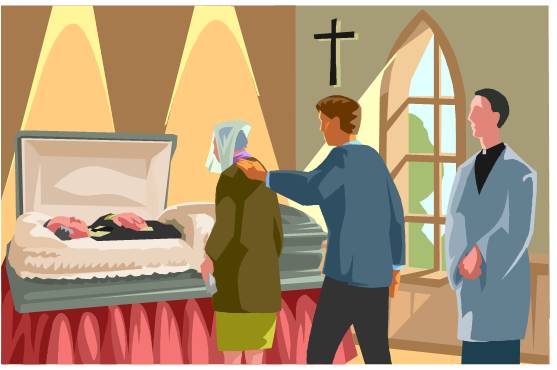Condolences Etiquette
Condolences etiquette works cooperatively with sympathy card etiquette and funeral etiquette. Where a sympathy card is a CARD, condolences typically take the form of a note or letter. Both the card and the note can be used interchangeably for one another.
Most people find it very hard to find the right wording for their notes. It’s worth taking a little time and thinking this through. Flowers fade, words remain and often provide comfort in the days to come. While the initial stages of grief often leave people nearly numb and unable to process what they’re reading, eventually that condolence note will come back out, offering thoughtfulness and memories.

Where the sympathy card is brief, condolences etiquette allows for a longer message – one of hope, strength, and special moments that bring good thoughts of the deceased. The best time to present these notes is during the first few days after someone dies. If you find yourself at a loss for words, an attributable, meaningful quote is certainly apt. Just take care that it doesn’t overstep the bounds of personal faith or cultural guidelines.
The basic formatting for a condolence note begins with a brief tribute to the deceased (pay our respects). If you knew the individual, this is a good point to share a fond remembrance, something that impacted your life in a good way. If you didn’t know the deceased, then talk about what that person meant to the recipient(s) of the note.
Next, offer your sympathy to those left behind. Write just like you talk – so they can nearly “hear” your voice. Finally offer whatever support you can. Make this something viable – like house sitting so they can take a day or two away to recuperate, or helping with estate chores. In addition to writing, photos are a perfectly acceptable addition o condolence notes. Many funerals now offer multi-media presentations with pictures shared by family and friends.

Sympathy card etiquette and condolence etiquette both stress the importance of individualizing your effort and writing it by hand. Those who have bad handwriting, however, can use a computerized script (practical etiquette says – a thought isn’t helpful if you can’t read it clearly!). Close the note with, “Sincerely” and your full name. Remember many families have people with similar names. In the days ahead the recipient will want to know who is who.
Some may wonder if a sympathy gift should accompany condolence cards. It certainly is a kind gesture, particularly if chosen carefully. However, it’s not required. Good suggestions for gifts, if you choose to send something, are pre-made foods, fruits (for eating on the go), a memorial candle, a commemorative sapling, or some relaxing music. The gift can arrive whenever you wish, but if you wait 10-14 days it’s a gentle reminder that this person or family is still in your thoughts (your condolence note, however, should come long before then).






New! Comments
Have your say! Leave me a comment in the box below.